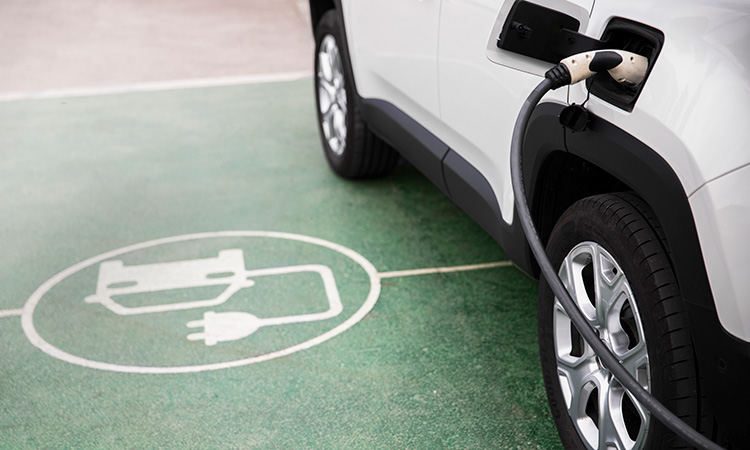
With electric vehicles becoming more popular every day as an alternate form of transport, learning about EV charging type 2 is essential for running an EV in the UK.
Choosing to invest in an electric vehicle will help you save money on fuel (especially during our current fuel crisis) but, more importantly, will help you contribute to reducing carbon emissions. So, learning everything you need to know about charging an EV is essential before you buy into the EV phenomenon.
This article will cover everything a beginner needs to know about type 2 EV charging and how it differs from type 1 EV charging.
Before we delve, we need to understand the following:
Jargon Related to Electric Vehicles
EV – means electric vehicle and any full battery electrically operated vehicle.
PHEV – stands for plug-in hybrid electric vehicle and refers to vehicles that have both an electric battery and a combustion engine that uses fossil fuels.
kWh – a unit of measurement (kilowatts per hour)
kW – a unit of measurement (kilowatts)
Rapid Charger – a charging point that an electric vehicle can use to refuel that can provide a charging power of over 50kW
Single Phase – a type of power connection used in domestic properties
Three Phase – a type of power connection used in industrial and commercial properties
What Is EV Charging Type 2?
When you start researching electric vehicles to potentially purchase, you’ll likely encounter both type 1 and type 2 electric vehicles.
Type 2 connections are the main charging connection you’ll find in the UK, as type 2 is designed to get optimal efficiency from the UK grid. Type 2 is also a fairly common connection type in Europe and Asia.
Type 1 connections are more popular in the United States. If you plan to buy an imported electric vehicle, you’ll need to be careful that it isn’t a type 1 connection.
If the electric vehicle you want has a type 1 connection and there’s no type 2 variant of the vehicle available, several converters will enable you to use a type 1 connection with type 2 cables and charging ports.
What Is The Difference Between Type 1 and Type 2 Charging?
The differences between type 1 and type 2 are:
- Type 1 charging connections have a 5-pin design.
- Type 2 charging connections have a 7-pin design.
- Type 1 chargers usually cap at 7.4kW due to technological limitations.
- Type 2 chargers can offer up to 150kW of charging power for three-phase and 7.4kW for domestic charging setups.
Type 1 tends to be more common in older charging setups, whereas type 2 is common in more modern ones.
What Chargers Use Type 2 Charging?
As of 2022, most EV chargers sold in the UK will use a type 2 connection. Since 2018, type 2 charging has been the standard across the industry in the UK and Europe – to keep charging simple, efficient, and straightforward.
For domestic settings, you’ll have various single-phase type 2 chargers to choose from. Some industry-leading brands that you may choose to shop with include:
- Wallbox
- EVBox
- Easee
- Myenergi
If you need a charger for a commercial or industrial property, you’ll likely need to invest in a three-phase charger, as most business-based properties will have access to a three-phase power supply. Three-phase chargers are also far more powerful and can charge electric vehicles quicker.
Can I Use Type 2 Charging With Any Electric Vehicle?
Every electric vehicle will have a different connection type, so it is always best to check the requirements of the vehicle you buy. That being said, most electric vehicles and plug-in hybrid electric vehicles can use a type 2 charger and connection.
However, plug-in hybrid electric vehicles will have a much lower battery capacity than regular battery electric vehicles due to their combustion engine. This means that a plug-in electric vehicle cannot use three-phase chargers with a charge power of 22kW or greater.
Plug-in hybrid electric vehicles are limited to using single-phase chargers of up to 7.4kW charging power.
What Is A Tethered And Untethered Type 2 Connection?
Aside from knowing the charging power and connection type you’ll need for your charging setup, you’ll also need to know whether you want a tethered or untethered connection for your charger. Type 2 connections are available in both tethered and untethered connection types.
A tethered connection is a charger with a cable attached to the charger chassis. This cable cannot be removed from the charger, meaning it will need a storage hook. A tethered charger acts similarly to a traditional fuel pump.
An untethered connection is where the charging cable can be disconnected from the charger chassis, making the cable transportable.
To Conclude
We hope our article has shed some light on electric vehicles, what you’ll need, and how to buy into the future of transport.

Leave a Reply